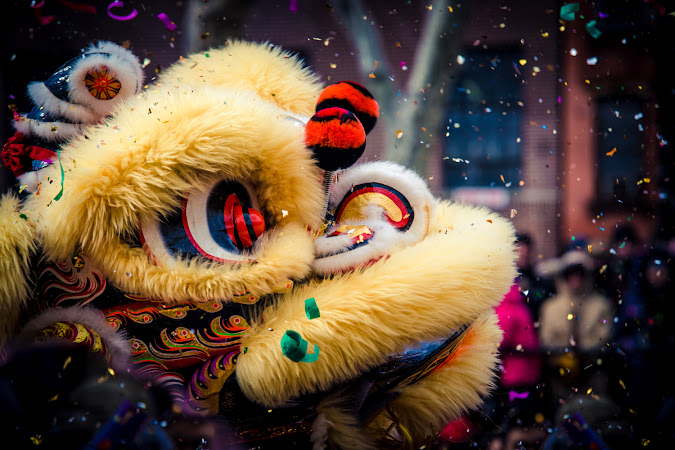5 interesting facts about lion dance
The lion dance is a traditional performance found in many countries worldwide. It is often seen during Chinese New Year and other ceremonial events and has roots firmly set in ancient history. Throughout the years, this exciting and vibrant art form has retained its customs, energy, and timelessness while adapting to fit new cultures as it spreads through each corner of the globe.
Today we're here to uncover some fantastic
facts about lion dancing from discovering why it's essential to how two people
can fit inside one outfit! Get ready for an intriguing dive into a truly unique
craft that will become just another item on your list of things you probably
didn't know about lions!
1) Origins
of lion dance can be traced back to China
The beautifully intricate and culturally rich
art of the lion dance has a long and fascinating history, dating back to the
Han Dynasty in China. This powerful performance, filled with acrobatics and
synchronized movements, combines myth, legend, and a deep desire to ward off
evil spirits and bring good fortune to spectators. The symbolism of the lion,
with its fierce demeanor and protective nature, captivates audiences while
encompassing the strength and resilience of the Chinese culture.
2) Traditional
lion dances are usually performed by two people
The beautiful art of the traditional Lion dance
is an experience that mesmerizes audiences worldwide. At the heart of this
cultural performance lie two skilled individuals who seamlessly work together
to bring the majestic lion to life. Each person has a crucial role - one as the
head and the other as the tail. Together, they don a vividly decorated lion
costume. The synchronization of their choreography demonstrates not only their
physical prowess but also speaks to the more profound sense of unity and
harmony, which are vital aspects of this ancient art form.
3) Lion dancers need to be flexible and coordinated
The breathtaking and invigorating art of Lion Dance is an integral aspect of Chinese culture, requiring performers to demonstrate exceptional agility, flexibility, and coordination. A captivating spectacle to behold, the dancers must master intricate movements in unison, working seamlessly together to bring the regal creature to life with the majestic aura of a roaring lion. This elaborate performance demands physical strength and stamina and a deep connection and understanding between the two individuals responsible for each element of the lion - its head and body.
4) Lion
dances are used in religious ceremonies
The beautiful art of lion dance, with its
vibrant costumes and lively music, has enthralled onlookers for centuries.
While many might associate these mesmerizing performances with cultural
festivities like the Chinese New Year, few know that lion dances have a much
deeper significance. These beautiful displays of skilled
acrobatics and energetic choreography have been indispensable in many
religious and ceremonial events, such as weddings and funerals. Lion dances are
believed to usher in good fortune, ward off evil spirits, and create a
harmonious environment.
5) Lion
costumes symbolize luck and prosperity
The captivating tradition of the lion dance is
a fascinating spectacle to behold and holds deep cultural significance. The
vibrant colors adorning a traditional lion costume - often red and gold - are
woven with purpose as they symbolize luck and prosperity for the onlookers. The
elaborate dance is performed to the pulsating rhythm of drums and the
reverberating crash of gongs, both holding a purpose beyond their musical
contribution.
Conclusion:
As we have seen, the lion dance is a highly
symbolic and mystical art form that has evolved over centuries to reflect
important cultural events. The precision and complexity of the movements add to
their unique appeal. While this ancient practice may not be as familiar in other
parts of the world, it's still popular and performed by enthusiasts around the
globe, often combining traditional and modern influences.



Comments
Post a Comment